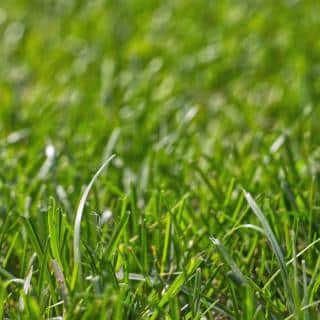

Mowing the lawn is an easy art to master as long as you follow these few crucial steps!
Use the right equipment for your space and terrain, work at the right time, and mow at the right height. Those are the three main factors that will lead to a perfectly trimmed lawn.
You don’t mow the lawn the same way all year round: every season requires a slightly different approach to cutting the grass.
The gardener must adapt the work to weather conditions that influence how lawn grass grows.
Mowing the lawn doesn’t only have an ornamental purpose. It also strengthens the grass and triggers sending off of new shoots. Roots are reinvigorated, sending runners off in new directions. The lawn thus becomes more dense, lush, and thick under the influence of mowing.
A vast choice to make from among many different types of lawn mowers!
To choose yours, you need to consider how much lawn surface you have to cover, whether it’s flat or not, and more personal preferences, too.
Last but not least, for people who absolutely detest mowing, a robot mower is the ideal option! Once properly set up, it works fine all on its own. Rain or shine, day in and day out, it can even work at night since it’s very quiet. With that type of mower, having the perfect lawn is as easy as ever!
 Once cut, all the trimmings must be done away with. Rather than wasting a trip to the landfill, it’s much better to recycle them into compost or, better yet, spread them as mulch under your ornamental plants or in the vegetable patch! Mulch from lawn trimmings is excellent to keep the soil cool and minimize watering. It even blocks weeds from growing, and as it breaks down, nutrients enrich the soil. Pure bliss for the garden, as you see!
Once cut, all the trimmings must be done away with. Rather than wasting a trip to the landfill, it’s much better to recycle them into compost or, better yet, spread them as mulch under your ornamental plants or in the vegetable patch! Mulch from lawn trimmings is excellent to keep the soil cool and minimize watering. It even blocks weeds from growing, and as it breaks down, nutrients enrich the soil. Pure bliss for the garden, as you see!
Good to know – Some lawn mowers have a “mulching” position, and others have add-on mulching kits to replace the collection hamper with. This makes your mower more versatile. Both options shred grass trimmings into very fine slivers, which the mower ejects to the side. Waste thus stays on the lawn and forms a protective and fertilizing mulch that is virtually invisible. Free, effortless topdressing!
If you’ve set an underground irrigation system up (or drip systems), however, you might run into a problem. This material often won’t get moist enough to break down naturally unless it rains regularly in the area. If it’s too dry for extended periods of time, trimmings accumulate and turn into a dry crust. It’s better to collect them and turn them into compost before topdressing with it.
Iris Makato, minor edits by Gaspard
Whichever make and model you choose, observe tips of blades of grass a few days after mowing. If they turn yellow or dry, it means blades need sharpening.
“the mower ejects to the side. Waste thus stay on the lawn and forms a protective and fertilizing mulch that is virtually invisible”
If you use a modern water saving drip irrigation, the sentence reads like:
the mower ejects to the side. Waste thus stay on the lawn and forms a yellow, dry and ugly cover that is wasted fertilizer.
Need to arrive to the 21st century.
Hi there, “21st century”, you’re right about mulch accumulating when it doesn’t rain or water enough. In most of Europe this won’t be a problem, as also in many portions of the United States, but in places where lawns are grown in drought-prone places it may accumulate as you describe. I reflected this in the article in case readers don’t reach the comments. As for being in the 21st century, I sure hope I’m in it or I’d be typing from the grave!